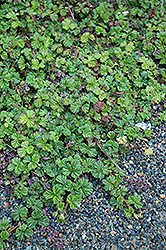Fri & Sat 8am - 8pm
Sun 8am - 7pm
Anytown, USA 12345
fax: 261.787.0463
e-mail: info@successgc.com


Plant Finder

Height: 10 inches
Spread: 3 feet
Sunlight:
![]()
![]()
Hardiness Zone: 7b
Other Names: Himalayan Creeping Bramble
Description:
Unlike more common raspberries, this is a groundcover evergreen plant with a very low habit of growth and a wide spread
Ornamental Features
Nepalese Raspberry has white flowers from late spring to early summer. It has attractive green evergreen foliage. The textured oval compound leaves are highly ornamental and remain green throughout the winter. It features an abundance of magnificent red berries in mid summer.
Landscape Attributes
Nepalese Raspberry is a multi-stemmed evergreen shrub with a ground-hugging habit of growth. Its relatively coarse texture can be used to stand it apart from other landscape plants with finer foliage.
This is a high maintenance shrub that will require regular care and upkeep. Each spring, cut back all dead and two-year old canes to the ground, leaving only last year's growth standing. It is a good choice for attracting birds to your yard. Gardeners should be aware of the following characteristic(s) that may warrant special consideration;
- Suckering
- Disease
- Spiny
Nepalese Raspberry is recommended for the following landscape applications;
- Mass Planting
- Groundcover
Planting & Growing
Nepalese Raspberry will grow to be about 10 inches tall at maturity, with a spread of 3 feet. It tends to fill out right to the ground and therefore doesn't necessarily require facer plants in front. It grows at a fast rate, and under ideal conditions can be expected to live for approximately 10 years. This is a self-pollinating variety, so it doesn't require a second plant nearby to set fruit.
This shrub does best in full sun to partial shade. It prefers to grow in average to moist conditions, and shouldn't be allowed to dry out. It is not particular as to soil type or pH. It is somewhat tolerant of urban pollution. This species is not originally from North America. It can be propagated by division.
